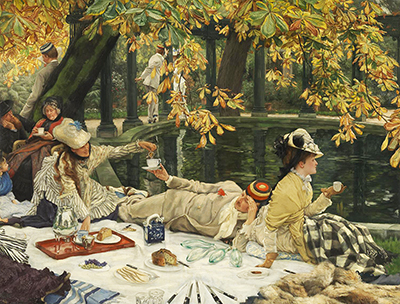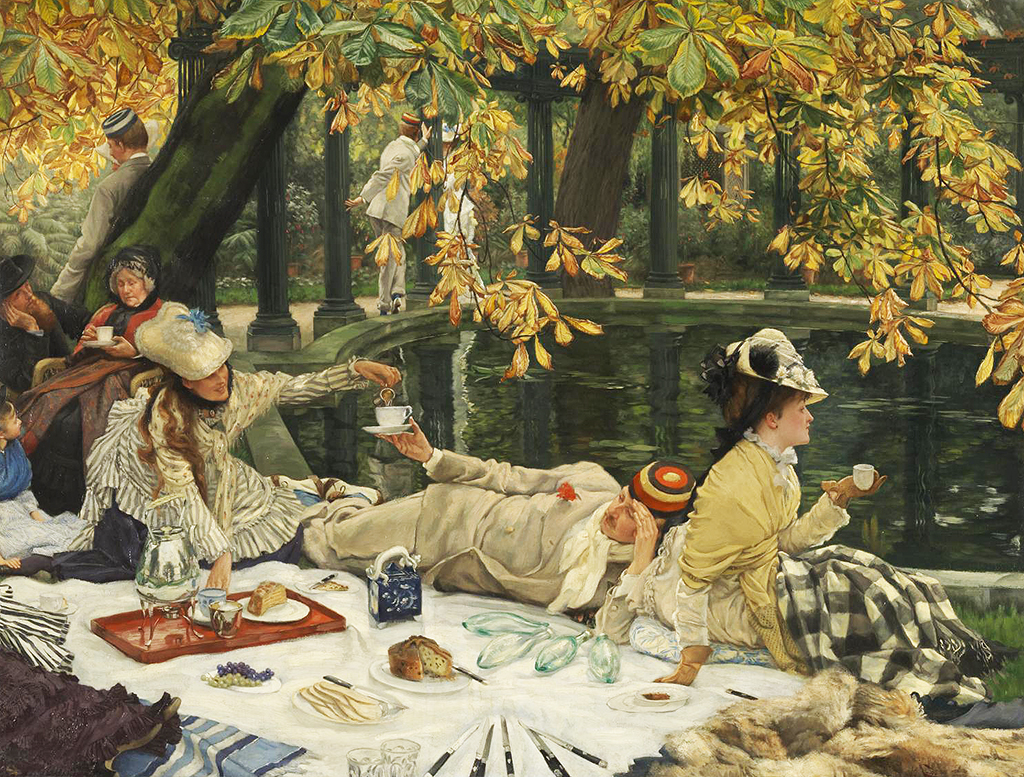Tissot attention to social commentary continues within Holyday, an artwork form 1877 that is draped in detail and interest.
The central feature would have to be the exchange of milk between man and woman, though the details in this painting suggests that they are not a couple themselves. Whilst she is married, as indicated by her ring, she is perhaps luring the gentleman with flirtatious behaviour, as he himself rests his head on the back of presumably his partner. Whilst this Victorian behaviour would not shock one now, or even lead to such accusations, back then social occasions were far more rigid and conformist. The equivalent today would be much more obvious and without the same purity.
This was a period in British life when Victorians were starting to enjoy free time for the very first time, and scenes such as these were only for those able to spare the time from work and family chores. This ensures that paintings such as these provide a stunning visual memory of changing times within British society, that many will find more accessible than reading about these changes in books. Aside from the possible scandal found with the main characters of the painting, there are some charming touches in the foreground, such as the various elements that form their picnic.
The calming nature of this entertaining scene is added to by the trees which sit in both the background and the foreground. Several branches creep over the main figures of the scene and we can imagine being in a large garden or perhaps a secluded part of a park. The gentlemen wear caps which represent particular private cricket clubs that is another symbol of the leisure time of this period. They are all sat around a circular pond, whilst solid pillars reach up to the top of the composition. The trunks of the trees lie close by, leaning more naturally to the side. There is also a smart walkway which connects this area with the surrounding features of this location.
We can learn a lot of paintings such as this about the Victorian era, particularly as Tissot was such as observant artist. There is the diet found within the elements of the picnic, the way in which friends and strangers would interact socially, the fashion of the period, and even some elements of silverware that would now be classed as genuine antiques. Playfully, the artist actually adds another set of figures to the painting through the reflection of the large teapot that is placed on a tray in the left hand side of the foreground. Tea was, of course, an integral part of society at that time too.





